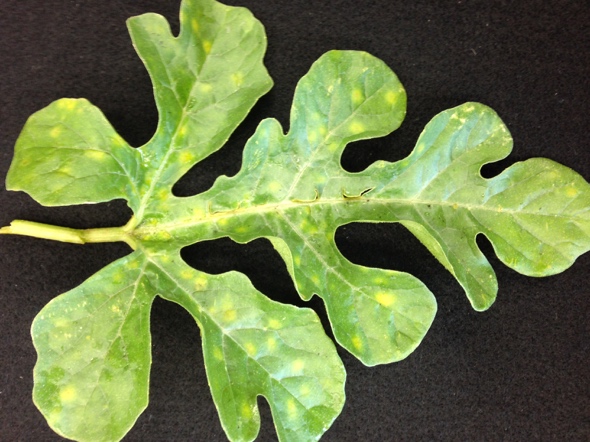

Do not apply more than two (2) sequential applications. Orondis Opti (Group M5 + 49) at 1.75 to 2.5 pints/A on 7- to 14-day intervals.Miravis Prime (Group 7 + 12) at 9.2 to 11.4 fl oz/A on 7- to 14- day intervals.Merivon Xemium (Group 7 + 11) at 5.5 fl oz/A on 7- to 14-day intervals.Under moderate to severe disease pressure use the higher rate on 5- to 7-day intervals. ManKocide (Group M1 + M3) at 2 to 3 lb/A on 7- to 10- day intervals.Inspire Super (Group 3 + 9) at 16 to 20 fl oz/A on 7- to 10-day intervals.Dexter Xcel (Group M3 + 11 + 3) at 72 fl oz/A on 7- to 10-day intervals.Dexter Max (Group M3 + 11) at 2.1 to 3.2 lb/A on 7- to 10-day intervals.Aprovia Top (Group 7 + 3) at 10.5 to 13.5 fl oz/A on 7 to 14-day intervals.Do not make more than one (1) application of a Group 11 fungicide before alternating to a labeled fungicide with a different mode of action for other fungicide groups apply no more than two (2) sequential applications alternating with another fungicide with a different mode of action. Premixes of fungicides are available and offer ease for fungicide resistance management.May be applied through sprinkler irrigation lines according to label directions.

BEST FUNGICIDE FOR GUMMY STEM BLIGHT PLUS
Regalia (Group P5) at 1 to 4 quarts/A plus another fungicide on 7- to 10-day intervals.OSO 5% SC (Group 19) at 3.75 to 13 fl oz/A on 7- to 14-day intervals.Orius 3.6F (Group 3) at 4 to 6 fl oz/A on 10- to 14-day intervals.Applications should be directed to provide coverage of the lower stem area. Omega 500F (Group 29) at 0.75 to 1.5 pints/A on a 7- to 10-day interval.Refer to label for appropriate rate per application volume. LifeGard WG (Group P6) at 1 to 4.5 oz/A on 7- to 14-day intervals for activating plant resistance.Previsto at 0.75 to 2 quarts/A on 5- to 7-day intervals.Kocide 2000 at 1 to 2.25 lb/A or Kocide 3000 at 0.5 to 1.25 lb/A on 5- to 7-day intervals.Cuprofix Ultra 40 Disperss at 1.25 to 2 lb/A on 5- to 7-day intervals.24-hr reentry for greenhouse use 48-hr reentry for all other applications. Badge SC at 0.5 to 2.5 pints/A on 5- to 7-day intervals.Copper products (Group M1) are not recommended as stand-alone materials.Echo 720 (Group M5) at 2 to 3 pints/A on 7-day intervals.Bravo Ultrex (Group M5) at 1.8 to 2.7 lb/A.Bonide Fung-onil (Group M5) is available for home gardens.Chlorothalonil formulations (Group M5) are labeled.Fontelis at 12 to 16 fl oz/A on 7- to 14-day intervals.Endura at 6.5 oz/A on 7- to 14-day intervals.Do not make more than two (2) sequential applications before alternating to a labeled fungicide with a different mode of action. Carboxamide (Group 7) formulations are registered for use.Avoid overhead irrigation when possible.Store squash slightly below 50☏ if possible.After harvest, cure squash 2 weeks at 75☏ to 85☏.Use plastic mulch to prevent infecting fruit that rests on mulch.Rotating out of cucurbits at least 2 years is the best control.The fungus causes a dry rot of the squash flesh. Later the spot becomes covered with white mycelium and tiny black fungal fruiting structures (pycnidia and perithecia). Regardless of where the lesion occurs, a gummy exudate is usually in the spot's center. On fruit, the fungus causes circular water-soaked spots. Symptoms On leaves, brown to black circular spots generally associated with the leaf margins progress toward the center of the leaf. The fungus will not grow below 50☏ and can attack all parts of the plant. A small wound on the fruit, such as a fingernail scratch, is sufficient for disease development. The fungus will not survive in soil without cucurbit refuse or other cucurbit hosts. Cause A fungus, Didymella bryoniae (asexual: Phoma cucurbitacearum), which overwinters on crop refuse and attacks numerous other cucurbits.


 0 kommentar(er)
0 kommentar(er)
